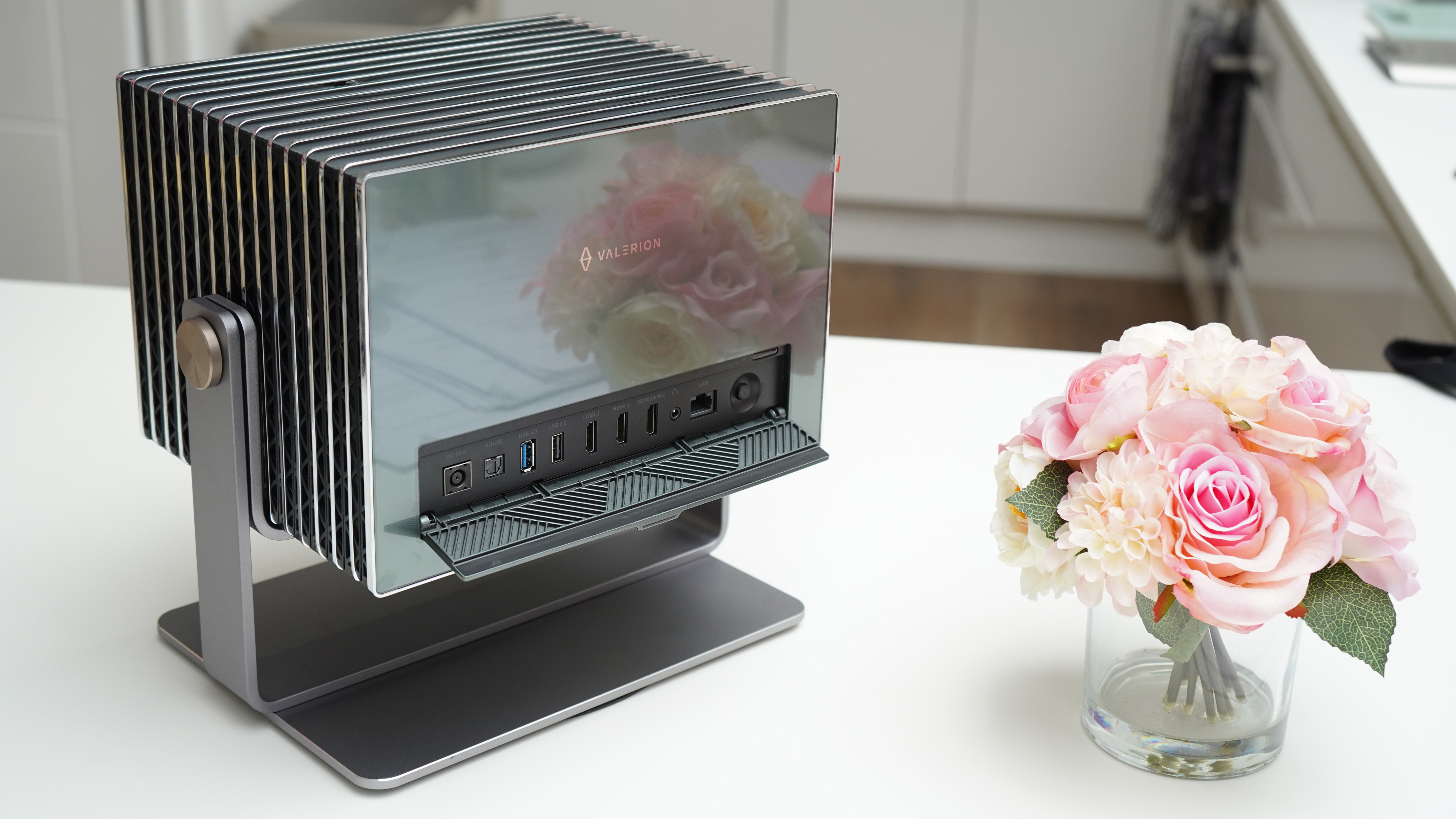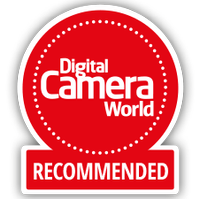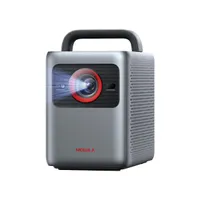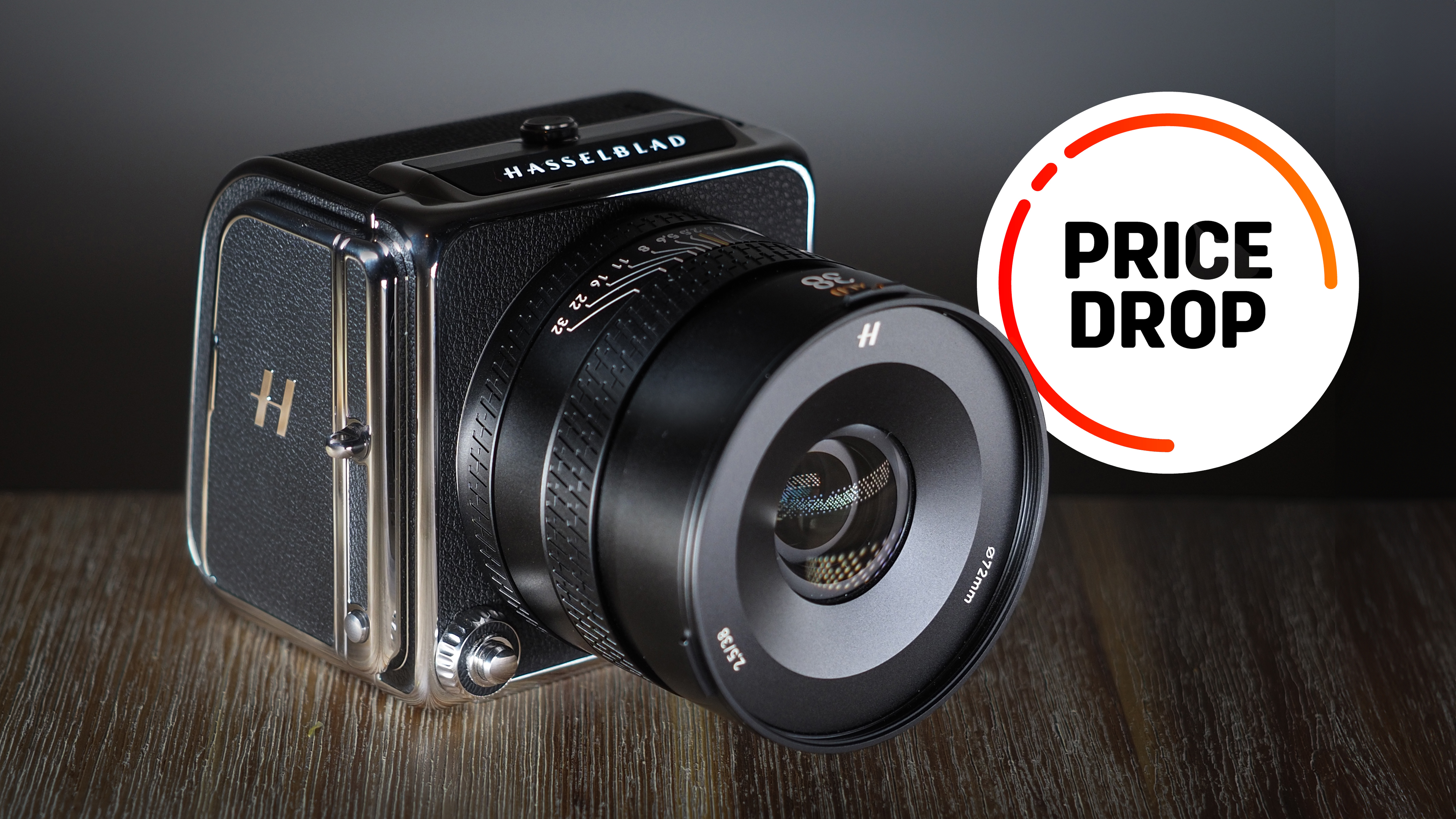Digital Camera World Verdict
With native 4K and optical zoom, the Pro 2 is a powerful projector with the ability to put its rich Dolby Vision image on a screen between 40 and 300 inches in size. That's a spectacular range of flexibility, despite an elegant and enclosed design.
Pros
- +
Simulates 15,000:1 contrast ratio
- +
Optical zoom prevents losing resolution when scaling
- +
3000 ISO Lumens
- +
Extensive compatibility including HDR10, Dolby Vision
Cons
- -
Didn't automatically zoom to the projection screen (possibly because of distance AND small obstruction).
- -
Limited to 60Hz for 4K
Why you can trust Digital Camera World
Valerion is a relatively new company in the projector market, though it already has a Red Dot award in the bag. It was founded by AWOL Vision, a specialist in short-throw projectors, so their devices are sometimes seen as 'long-throw' but the range is more comparable to regular projectors.
The brand might not be as well-known as Epson and BenQ, but is making waves in the home cinema space, and – given the connectivity and relative value – anything of interest to the home cinema market should be of interest to creatives too.
If you're watching or creating 4K content, then you need a device capable of displaying that resolution. If you're likely to be moving the projector around, some flexibility in the display size and easy adjustment is desirable too. The VisionMaster Pro 2 resolves 4K – 3840 x 2180 – using pixel shifting tech, which means that the 0.47-inch DMD DLP chip is rapidly moved in front of the triple laser, which creates the imaging light to simulate all the pixels. The spec is 3,000 ANSI lumens (though it can go even higher at the expense of color accuracy, but I'll ignore that).
Price
The suggested retail price of this projector is $2,999, which puts it at a bit of a premium compared to others we've tested – including 4K options like the Anker Nebula Cosmos – but that is a DLP with a spinning wheel, while this uses three separate lasers to produce its image, which should mean better color accuracy.
Specs
Technology | 3 Laser |
Screen range | 40"-300" |
Connectivity | WiFi, HDMI x 3 (one eArc), USB 3, USB 2, LAN, SPDIF (Optical), 3.5-inch. |
SmartHome | Google TV system – support for AirPlay 2, Chromecast, Miracast, Apple HomeKit, Alexa, and Control 4. |
Remote | IR / Bluetooth |
Size | 10.2×7.3×8.5 inches / 260x186x216mm |
Weight | 7.4kg / 16.3 pounds |
Throw | 0.9:1 to 1.5:1 |
Build and handling
Right from the start, this is a premium experience, and the unboxing told me that. The branded polystyrene briefcase is hinged and of a quality which can be re-used for moves, while an unboxing guide is a handy treat. The real icing on the cake was the slick slide-out box for the IR/Bluetooth remote – yes, you don't need to point it at the projector for it to work. The elegance was reassuring.
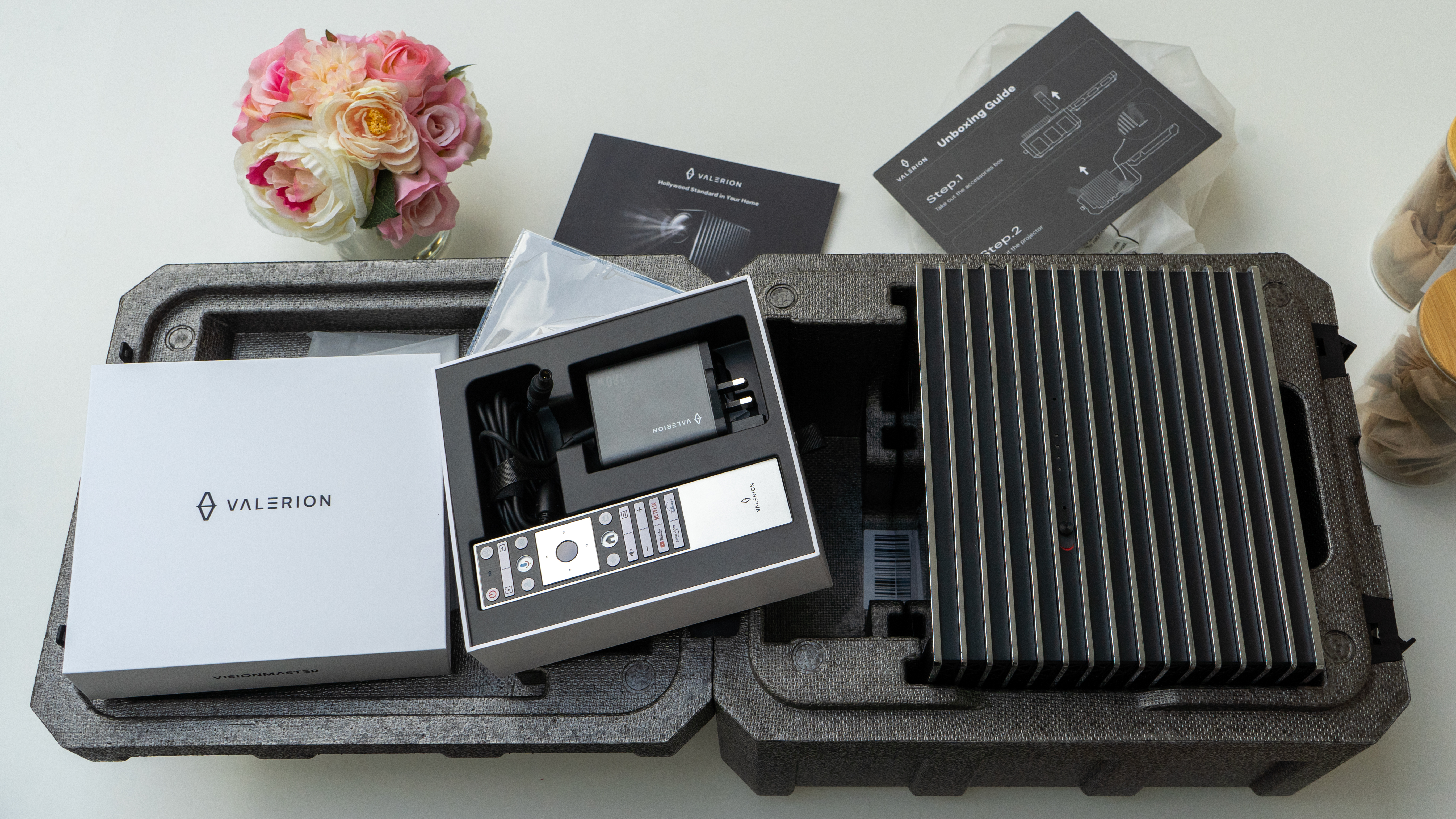
Valerion also loaned me a tilt base with the review unit, which meant I was able to angle the projector conveniently from a stool or kitchen worktop (more elegant permanent solutions would have made sense were I not conducting a review!) The tilt base was perfectly weighted though, with the balance of an angle-poise lamp despite the weight of the projector. Personally I also thought it a sensible choice to go with a different metal (similar to an older MacBook Pro) rather than something which didn't quite match the shiny edges of the projector itself.
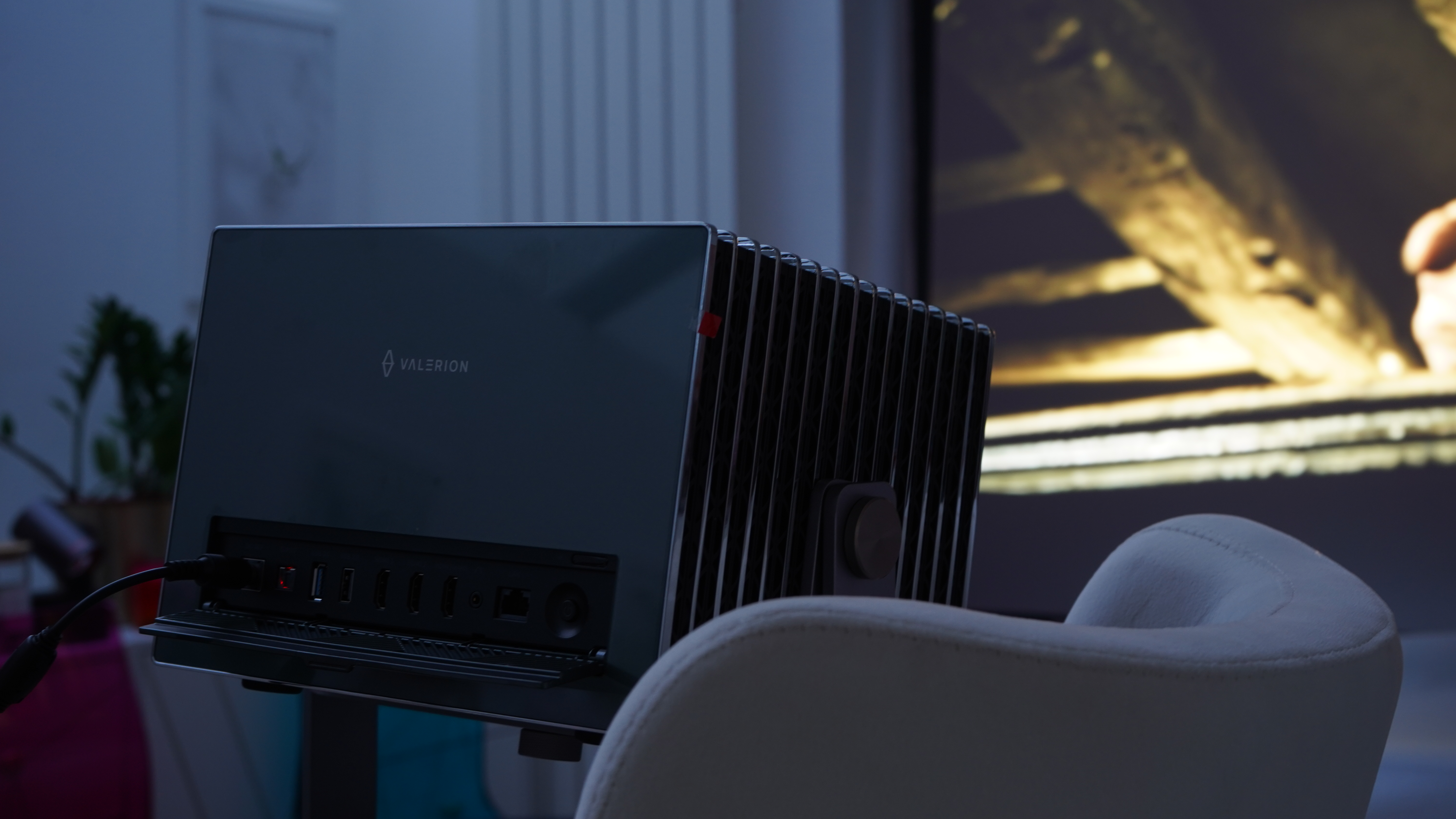
The projector's design is striking, sporting shiny grille-like edges and flat glass on the front and back. To enhance this effect, the generous array of ports have all been placed behind a hinged flap which can conceal them. Admittedly, since Wi-Fi is an option and there are built-in speakers, I might have been tempted to have left the DC power socket outside this door so that it'd be possible to operate the machine with no visible sockets, but that's a very minor quibble.
The best camera deals, reviews, product advice, and unmissable photography news, direct to your inbox!
The hinge is reflected in the front foot design too, while the rear feet on the base are adjustable by screwing in and out by about a centimeter.
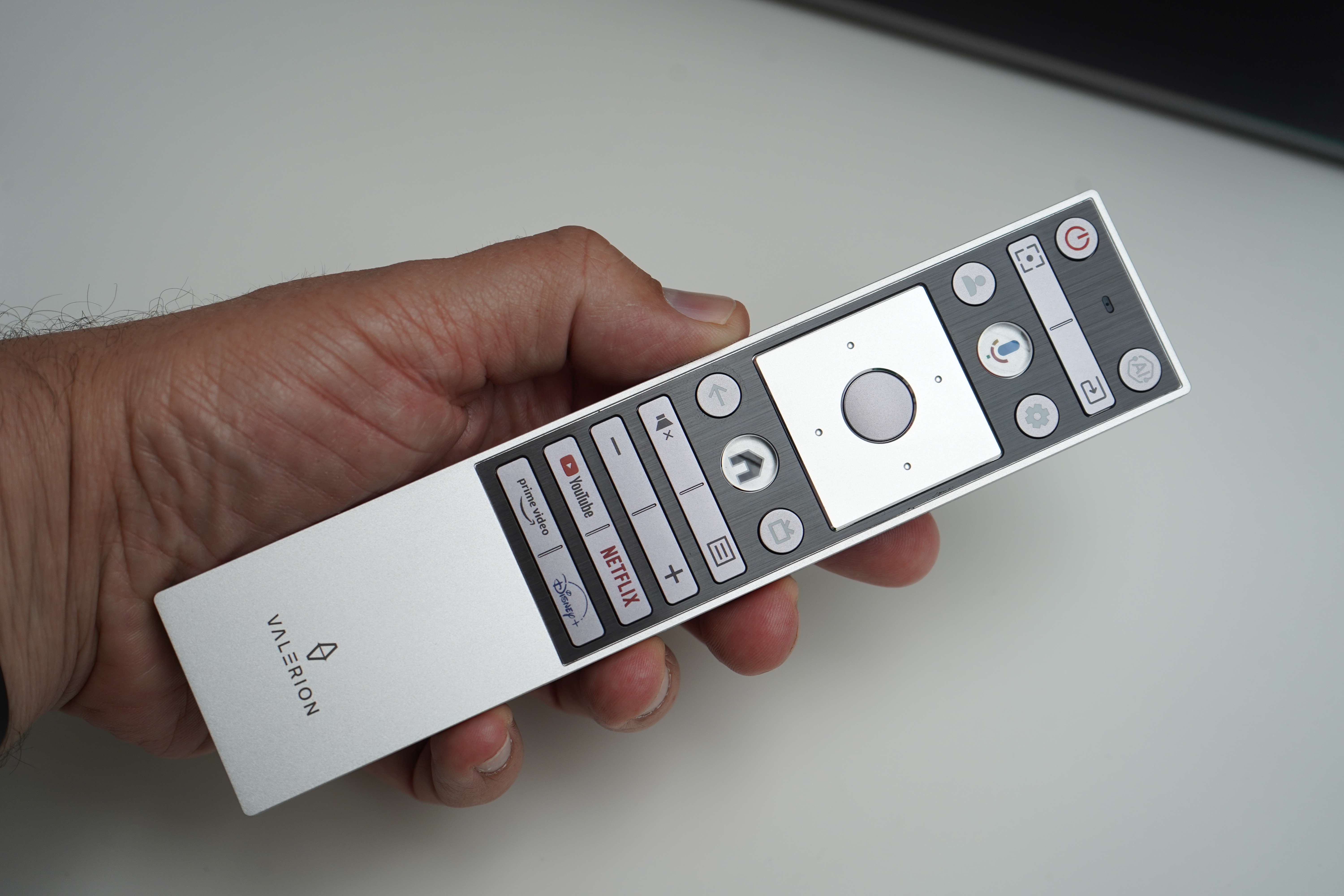
The design of the remote – a light-colored metallic design – is a bit quirky, but, hey, if you're looking at having a projector in your room, you aren't going for ordinary, are you? It works like any other GoogleTV remote and I found it just as responsive once set up. (Like most projector remotes, it worked only as an IR remote that needed pointing at the device at first, but after pairing – pressing and holding buttons for 3 seconds when instructed – it could be pointed anywhere with no issues.)
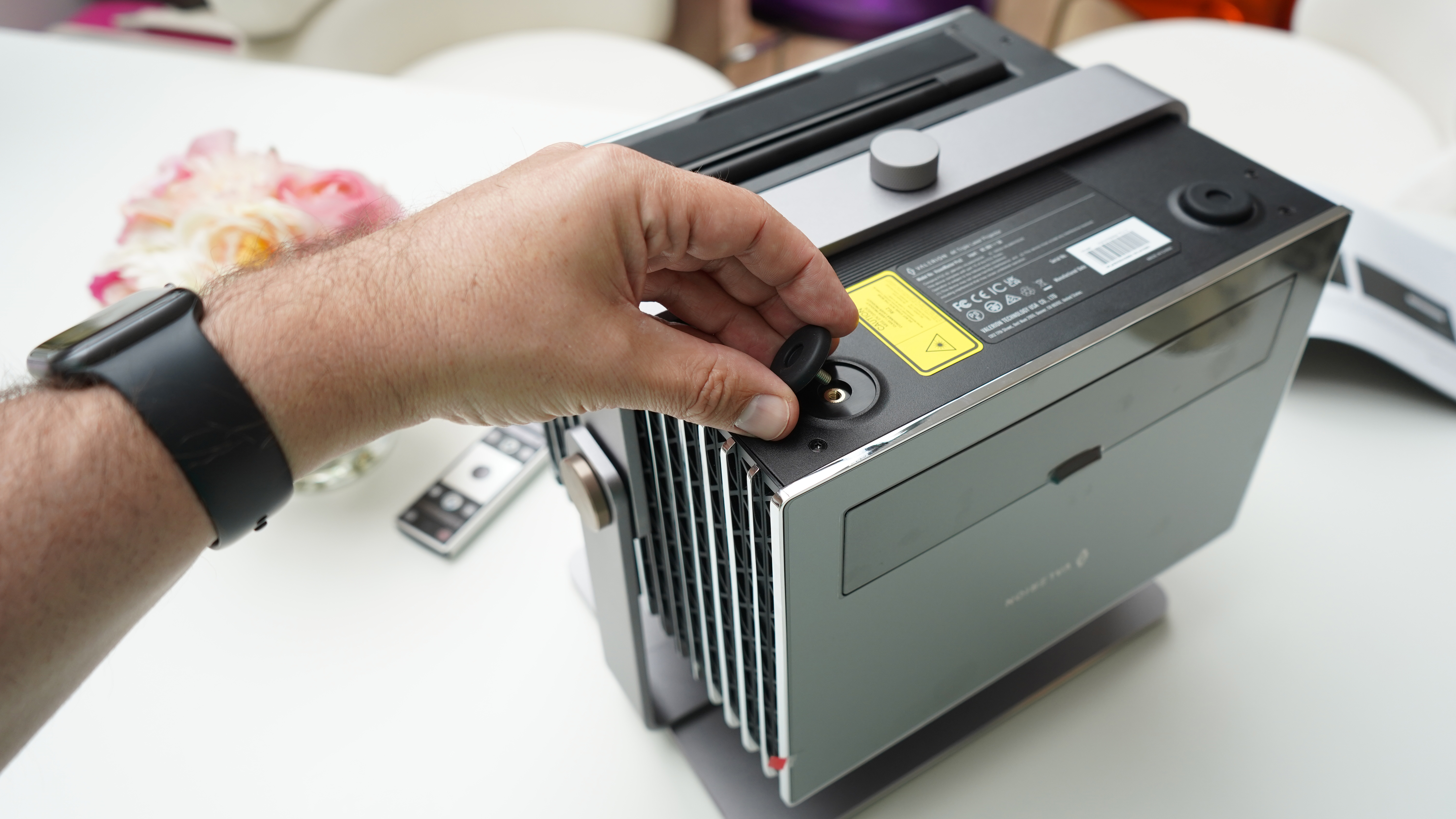
The device uses a 0.47-inch chip capable of 240Hz at 1080p (or 60Hz at 4K) and remaining quiet. If you have the 3D glasses, it'll support active DLP link tech too. The onboard processor is based on the Arm Cortex-A73 / MT9618 clocked at 1.4 GHz and 128GB storage for media apps. I certainly didn't see any serious issues with the AI-powered scene recognition that this chip powers.
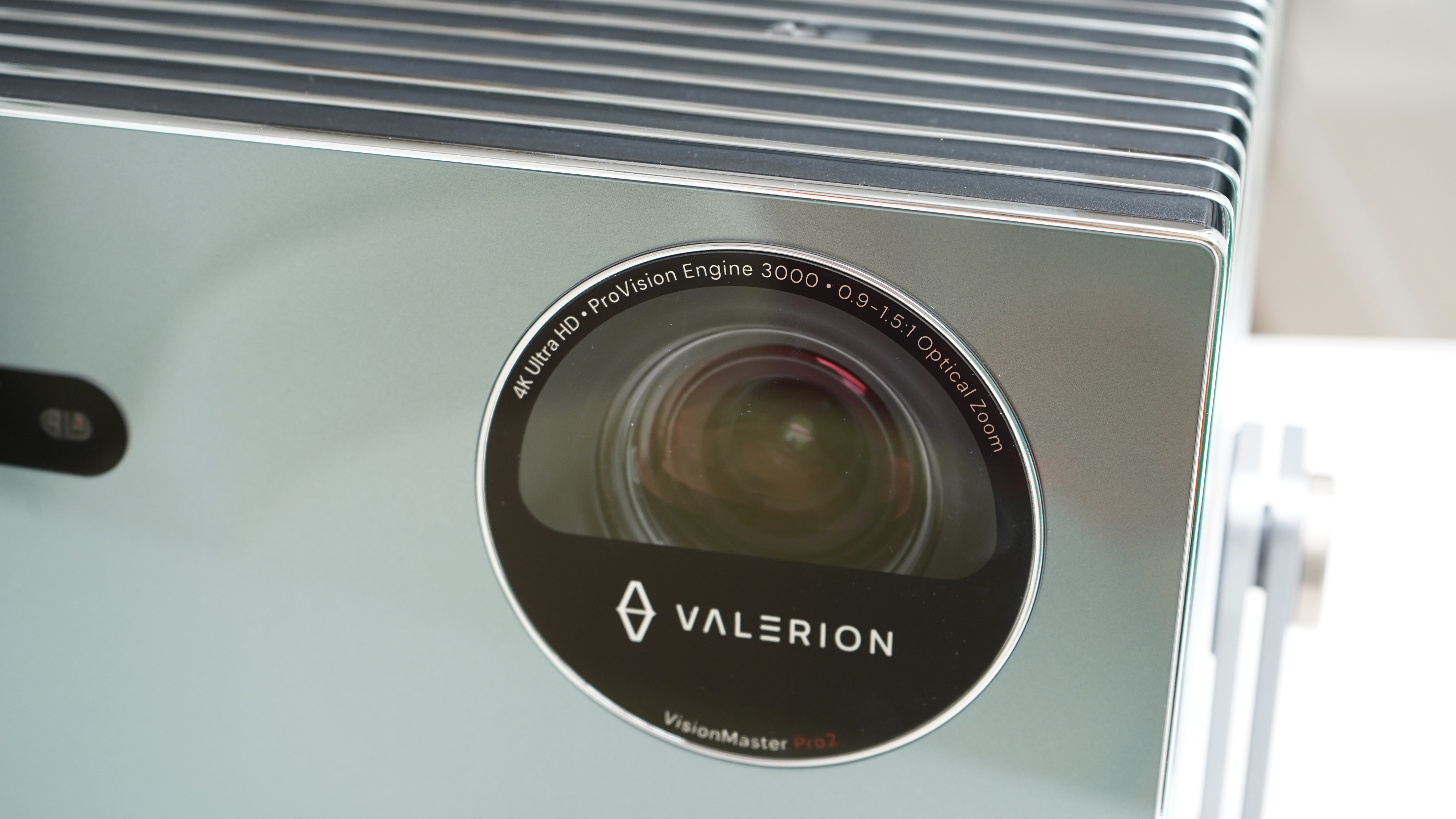
Performance
The projector produces a crisp image, especially when close to front-on. There was very little evidence of fringing, and the detail was impressive without being suspect.
Moreover, even in action sequences – both saturated and colorful like that in Sing 2 and more muted like those in the Lord of the Rings films – I saw a lot less of the rainbow effect than I've seen on other projectors. Not none, for sure; there was some occasional specking when seen on the reflective screen, but for the most part I was very impressed.
Admittedly (especially given the presence of an optical zoom adjustment) it didn't perform quite as well as I expected in my coffee-table test. I was unable to place the projector as far as 4m / 13ft from a 100-inch projection screen and shrink the image to a small enough size to fit onto the screen. (The throw rating is from 0.9:1 to 1.5:1.)
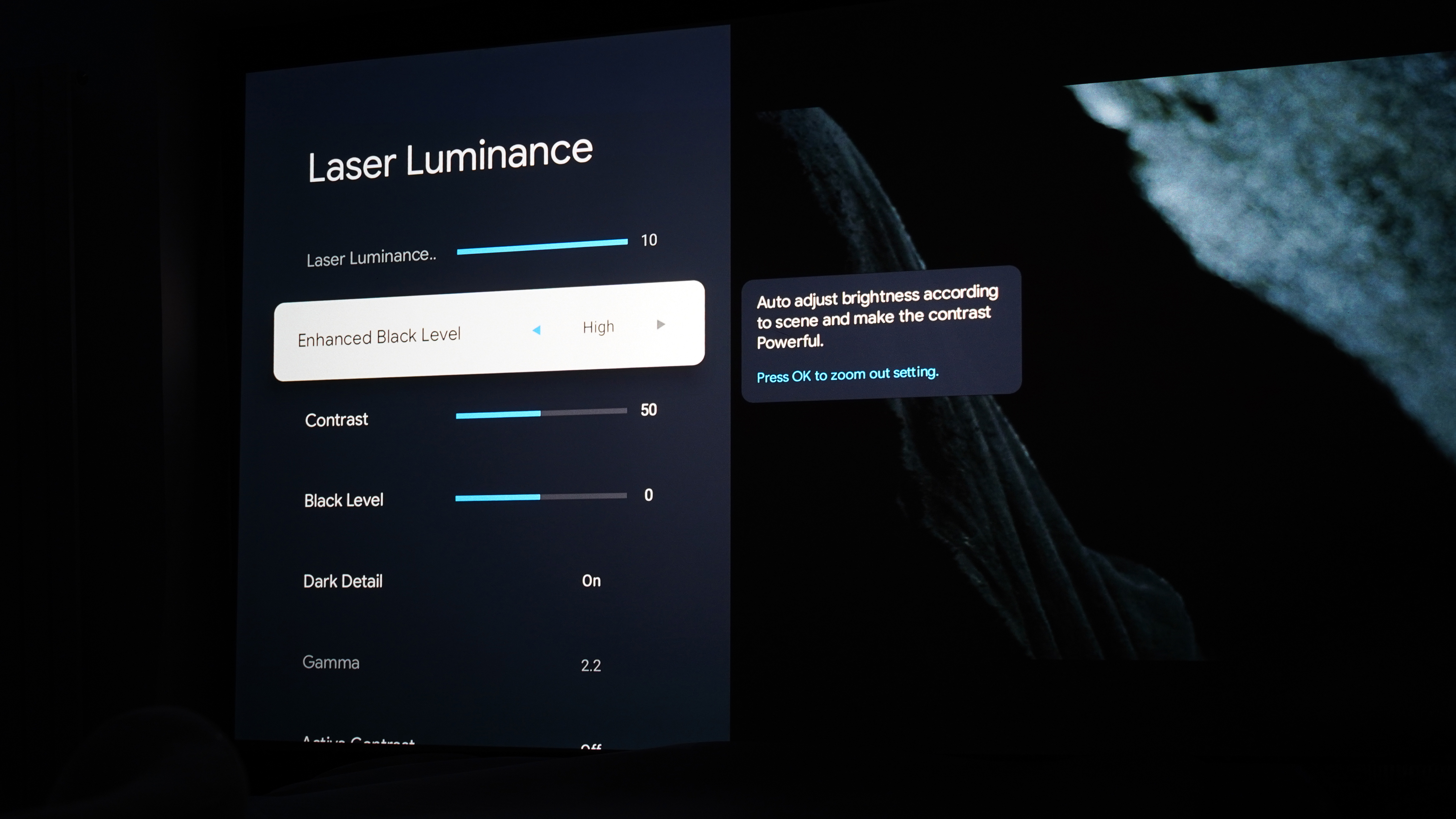
I don't always recommend taking a deep dive into a TV software's image settings, but tweaking a couple of settings did seem to improve the picture markedly for me. There was an option called 'Enhanced Black Level' which was turned off by default, but when set to 'High' made the darker scenes in The Lord of the Rings: The Fellowship of the Rings feel noticeably richer.
This system strategically reduces the laser power in darker areas of the image, in some ways emulating the effect of a locally lit TV (like an OLED). It's algorithmic, but you can see the result work, and, honestly, I was amazed in a way I am not normally.
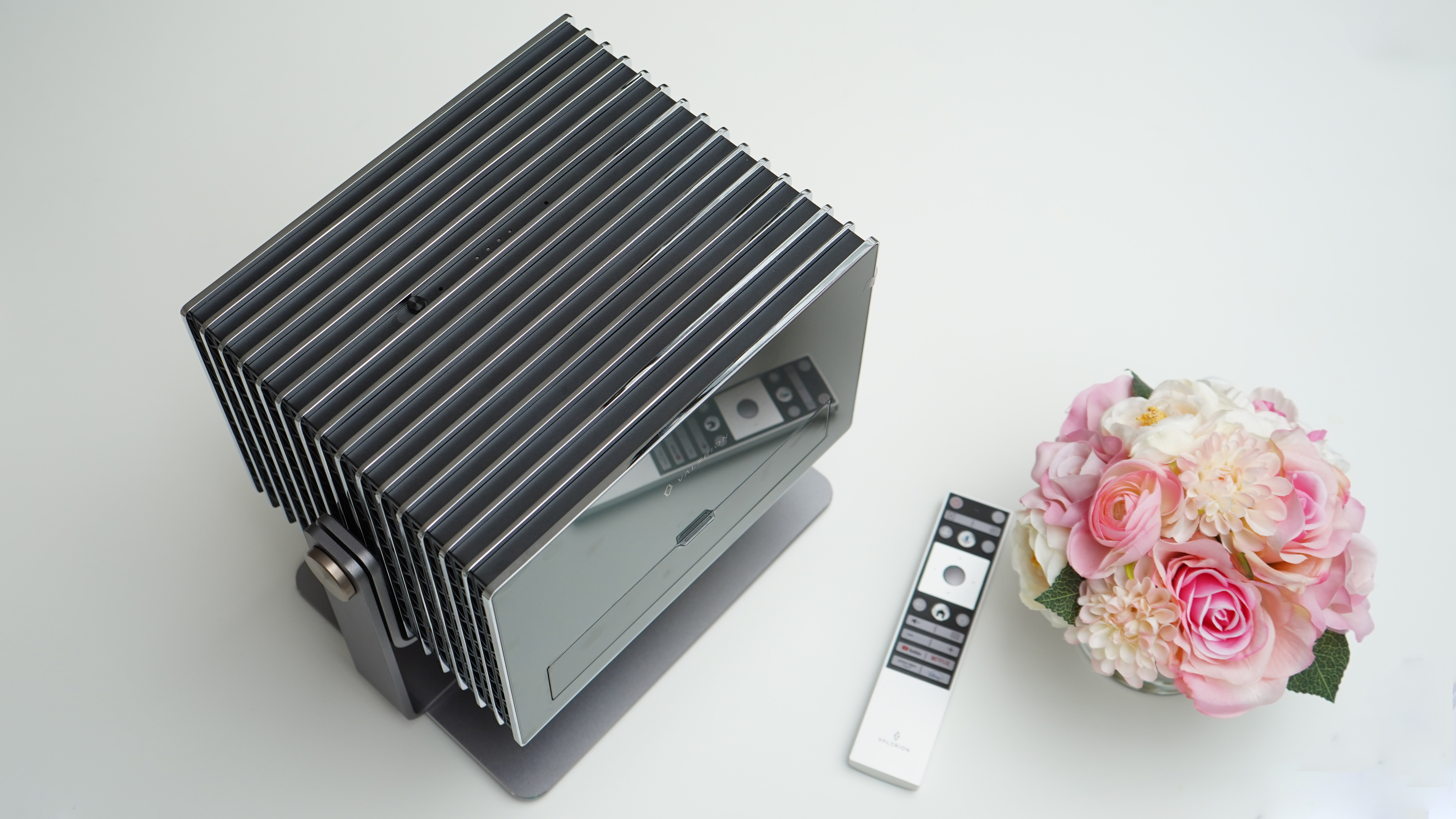
Overall verdict
The Pro 2 is an impressive projector (especially if you keep the brightness just below the top point where the color accuracy seems to suffer). To my mind, that means it's best thought of as limited to 200-inches (unless it's completely dark) rather than the 300-inches it's actually capable of, thanks in part to that optical zoom. Then again, if you've got space for a 300-inch screen, hats off to you!
Where the device achieves is its impressive value. The quality of the image against the asking price is, frankly, spectacular. There are significantly more expensive projectors which don't offer the same range of features or image brightness, and here the modern image processing manages to create much more contrasty images than you have any right to expect from a device which theoretically has a contrast ratio of 1:1,600 but looks like it could be 1:10,000 when you turn on EBL.
That comes because this is a bright projector for the money. It can do everything a cinephile needs too – including 24 & 48fps optimisations. It's also pleasing to note that this product emerged from a successful Kickstarter and was followed by software updates (that's how the 3D functionality got turned on!). Personally, that's the kind of thing which I find very reassuring – in other words, it's not too good to be true.
Features ★★★★★ | The feature set is impressive, with high brightness, HDR tone mapping, and impressive black level enhancement. |
Design ★★★★☆ | It's difficult to give this a mid-rank because there is an element of 'love it or hate it' in the styling, but, that aside, |
Performance ★★★★☆ | With very little 'rainbow effect', however sometimes color felt a bit off (too green). The built in sound is impressive too. |
Value ★★★★★ | The projector is capable of a high quality image, and there isn't much to match it for the same money. |
Alternatives
The Anker Nebula Cosmos 4K SE is a modestly-priced 4K alternative which is very luggable thanks to that handle in the design. It is a little noisier in operation, and the brightness is not as high, but it is still a native 4K device and the outlay is significantly less.
How I test projectors
When I test projectors, I try the device on a dedicated projection screen – in this case a 100-inch screen provided by Valerion which I had to assemble myself. I also test projectors on a white-painted and a light gray-painted wall to see how it copes with less-than-ideal conditions (to be honest, life is a lot easier, especially with a portable projector, if you can use a wall!)
I also always conduct what I call the 'coffee table test' or some variant – to see what the effect of putting the projector on a table at an awkward angle from the wall is. This is important because many projectors have automated keystone corrections.
I also always test by connecting to a MacBook to see how typical monitor images look – after all, this is a photography & video site! The appearance of type (black on white, white on black, etc.) and typical sample photos as well as standard tests like the color bars, and a selection of video clips with dark backgrounds, fast motion, and other key criteria are all important.
Finally, I also like to declare it "movie night" and see whether the device works with friends and family. My girlfriend and family's input is always interesting – this time we watched Sing 2 and were impressed with the resolution in the dénouement.

With over 20 years of expertise as a tech journalist, Adam brings a wealth of knowledge across a vast number of product categories, including timelapse cameras, home security cameras, NVR cameras, photography books, webcams, 3D printers and 3D scanners, borescopes, radar detectors… and, above all, drones.
Adam is our resident expert on all aspects of camera drones and drone photography, from buying guides on the best choices for aerial photographers of all ability levels to the latest rules and regulations on piloting drones.
He is the author of a number of books including The Complete Guide to Drones, The Smart Smart Home Handbook, 101 Tips for DSLR Video and The Drone Pilot's Handbook.
You must confirm your public display name before commenting
Please logout and then login again, you will then be prompted to enter your display name.
